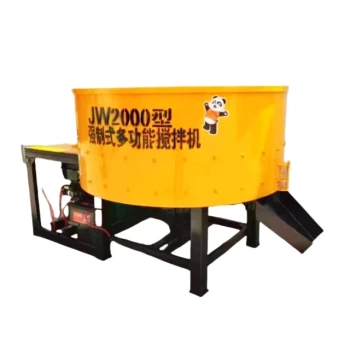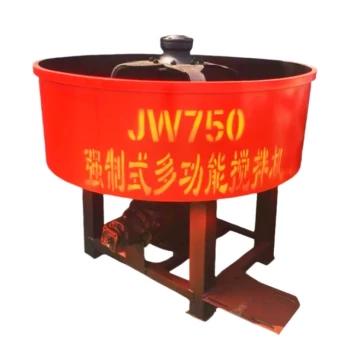While the terms "cement mixer" and "concrete mixer" are often used interchangeably in casual conversation, there are subtle technical distinctions between them. Both machines serve the purpose of mixing construction materials, but their design, capacity, and intended use can vary. The confusion arises because cement is a key ingredient in concrete, leading to overlapping terminology. However, professionals in construction and material science recognize nuanced differences in their applications and capabilities.
Key Points Explained:
-
Terminology and Common Usage
- Cement mixer is often used colloquially to describe small, portable mixing units, while concrete mixer is the technically accurate term for machines handling full concrete mixtures (including aggregates).
- The cement mixer label persists due to cement being the most recognizable ingredient, even though concrete is the final product.
-
Material Composition Differences
- Cement mixers typically blend cement, sand, and water to create mortar or thin mixes.
- Concrete mixers incorporate aggregates (e.g., gravel or crushed stone) alongside cement, sand, and water, requiring heavier-duty mechanisms to handle the abrasive materials.
-
Design Variations
- Drum rotation: Concrete mixers use rotating drums without internal paddles, relying on gravity and motion to blend coarse aggregates evenly.
- Mortar mixers (a subset of cement mixers) often feature stationary barrels with paddles for smoother mixtures.
-
Operational Scale
- Cement mixers are smaller and suited for precision tasks like bricklaying or plastering.
- Concrete mixers are larger, ranging from portable units to truck-mounted volumetric mixers for high-volume projects like foundations or pavements.
-
Mixing Methods
- Batch mixers (common for both types) allow precise control over proportions, ideal for small projects.
- Continuous mixers (mostly for concrete) prioritize speed and volume, feeding materials nonstop via screw conveyors—useful for large-scale infrastructure.
-
Industry Standards
- ASTM and other standards differentiate equipment based on load capacity, mixing efficiency, and output consistency. Concrete mixers must withstand higher wear from aggregates.
Ever wondered why some mixers look like giant spinning barrels while others resemble oversized blenders? The answer lies in the materials they’re built to handle.
-
Practical Implications for Buyers
- For mortar or repair work: A compact cement mixer saves time and effort.
- For structural concrete: Invest in a robust concrete mixer with corrosion-resistant components to endure abrasive aggregates.
In summary, while the terms overlap, the distinction matters when selecting equipment. Think of cement mixers as specialized tools for fine mixtures and concrete mixers as heavy-duty workhorses—both vital to building everything from garden walls to skyscrapers. After all, isn’t it fascinating how these machines transform raw materials into the foundations of our cities?
Summary Table:
| Feature | Cement Mixer | Concrete Mixer |
|---|---|---|
| Primary Use | Mixes cement, sand, and water for mortar | Mixes cement, sand, water, and aggregates |
| Design | Smaller, often with paddles | Larger, rotating drum without paddles |
| Material Handling | Smooth mixtures (mortar, plaster) | Coarse, abrasive aggregates |
| Scale | Small projects (bricklaying, repairs) | Large projects (foundations, pavements) |
| Mixing Method | Batch mixing for precision | Continuous mixing for high volume |
| Durability Requirements | Moderate wear resistance | High wear resistance for aggregates |
Need the right mixer for your project? Contact us today to explore Garlway's durable winches and construction machinery solutions!



















